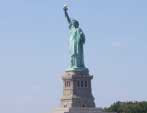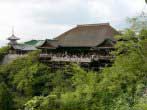The results for the new 7 wonders was announced on 7 July 2007:
- The Great Wall, China
- Petra, Jordan
- Christ Redeemer, Brazil
- Machu Picchu, Peru
- Chichén Itzá, Mexico
- The Roman Colosseum, Italy
- The Taj Mahal, India
-----------------------------------------------------------------------------------------------------------------------------
Currently there is a global competition to name the new 7 wonders of the world. The UNESCO (The United Nations Educational, Scientific and Cultural Organisation) currently has 830 World Heritage Sites, and only 21 finalists are being selected.
These 7 were deemed wonders in ancient times by observers of the Mediterranean and Middle East.
- The Egyptian pyramids - the only surviving structures from the original list of 7 architectural marvels.
- Hanging Gardens of Babylon
- Statue of Zezus at Olympia
- Temple of Artemis at Ephesus
- Mausoleum of Halicarnassus
- Colossus of Rhodes
- Pharos lighthouse of Alexandria

Map of 7 wonders of the world
Do visit this website for more about the 7 ancient wonders of the world: http://ce.eng.usf.edu/pharos/wonders/index.htmlBelow are the 21 finalists for the new 7 wonders. You can vote your choice at this website:
http://www.new7wonders.com until 6 July 2007. The 7 winners will be announced on 7 July 2007. Do leave your comments below on which are your 7 wonders.
 The Acropolis of Athens (450 - 330 B.C.) Athens, Greece: A million people come here each year to see the marble temples and statues of Greek gods and goddesses dating from the fifth century BC. Today, the Parthenon in particular is an international symbol of Greek civilization.
The Acropolis of Athens (450 - 330 B.C.) Athens, Greece: A million people come here each year to see the marble temples and statues of Greek gods and goddesses dating from the fifth century BC. Today, the Parthenon in particular is an international symbol of Greek civilization.
 Alhambra (12th century) Granada, Spain: The palace and citadel, perched above Granada, was the residence of the Morrish caliphs who governed southern Spain in splendour until 1492.
Alhambra (12th century) Granada, Spain: The palace and citadel, perched above Granada, was the residence of the Morrish caliphs who governed southern Spain in splendour until 1492.
- This statue of Jesus stands some 38 meters tall, atop the Corcovado mountain overlooking Rio de Janeiro. Designed by Brazilian Heitor da Silva Costa and created by French sculptor Paul Landowski, the statue took five years to construct and was inaugurated on October 12, 1931.
 The Eiffel Tower (1887 - 89) Paris, France: The 295 1/2m tower built in 1889 by Gustave Eiffel symbolises Paris. It is made almost entirely of open-lattice wrought iron and was erected in only 2 years. It was the tallest man-made structure in the world until the Empire State Building was constructed.
The Eiffel Tower (1887 - 89) Paris, France: The 295 1/2m tower built in 1889 by Gustave Eiffel symbolises Paris. It is made almost entirely of open-lattice wrought iron and was erected in only 2 years. It was the tallest man-made structure in the world until the Empire State Building was constructed.
 The Great Wall of China (220 B.C and 1368 - 1644 A.D.) China: The Great Wall of China was built to link existing fortifications into a united defense system and better keep invading Mongol tribes out of China. The 6,693km barricade running from east to west is the world's longest man-made structure and it is disputed that it is the only one visible from space.
The Great Wall of China (220 B.C and 1368 - 1644 A.D.) China: The Great Wall of China was built to link existing fortifications into a united defense system and better keep invading Mongol tribes out of China. The 6,693km barricade running from east to west is the world's longest man-made structure and it is disputed that it is the only one visible from space.
 The Hagia Sophia (532 - 537 A.D.) Istanbul, Turkey: The soaring cathedral, also called the Church of Holy Wisdom, was built in 537BC at Constantinople, today's Istanbul. The massive dome, which is the prominent architectural feature, has since often been used as a model for the design of Islamic mosques. Today, the monument is a museum serving both Christians and Muslims.
The Hagia Sophia (532 - 537 A.D.) Istanbul, Turkey: The soaring cathedral, also called the Church of Holy Wisdom, was built in 537BC at Constantinople, today's Istanbul. The massive dome, which is the prominent architectural feature, has since often been used as a model for the design of Islamic mosques. Today, the monument is a museum serving both Christians and Muslims.
 The Kremlin and Red Square (1156 - 1850) Moscow, Russia: Built as a residence for Ivan I, the Kremlin was the official residence of the Czars until the 1917 Russian Revolution. Today, it still houses the President’s office. In front of the Kremlin is Red Square – an impressive and exuberant plaza which, for many people, is associated with the infamous May Day demonstrations.
The Kremlin and Red Square (1156 - 1850) Moscow, Russia: Built as a residence for Ivan I, the Kremlin was the official residence of the Czars until the 1917 Russian Revolution. Today, it still houses the President’s office. In front of the Kremlin is Red Square – an impressive and exuberant plaza which, for many people, is associated with the infamous May Day demonstrations.
 The Statue of Liberty (1886) New York City, U.S.A.: The Statue of Liberty was a gift of the French government to the United States to honor the ideals of freedom and independence. The 91 1/2m statur in new York Harbour has welcomed immigrants and symbolised freedom since 1886. It is also the one New7Wonders candidate that most closely resembles one of the Ancient 7 Wonders - The Colossus of Rhodes.
The Statue of Liberty (1886) New York City, U.S.A.: The Statue of Liberty was a gift of the French government to the United States to honor the ideals of freedom and independence. The 91 1/2m statur in new York Harbour has welcomed immigrants and symbolised freedom since 1886. It is also the one New7Wonders candidate that most closely resembles one of the Ancient 7 Wonders - The Colossus of Rhodes.
 Stonehenge (3000 B.C. - 1600 B.C.) Amesbury, United Kingdom: With each stone weighing around 50 tons, it is regarded as a truly amazing feat of engineering. Although it is not clear who built the monument, nor for what purpose, it has been speculated that it was either a temple dedicated to the worship of ancient earth deities, an astronomical observatory or a sacred burial site.
Stonehenge (3000 B.C. - 1600 B.C.) Amesbury, United Kingdom: With each stone weighing around 50 tons, it is regarded as a truly amazing feat of engineering. Although it is not clear who built the monument, nor for what purpose, it has been speculated that it was either a temple dedicated to the worship of ancient earth deities, an astronomical observatory or a sacred burial site.
 The Taj Mahal (1630 A.D.) Agra, India : This immense mausoleum was built on the orders of Shah Jahan, the fifth Muslim Mogul emperor, to honor the memory of his beloved late wife, who died in childbirth. Built out of white marble and standing in formally laid-out walled gardens, the Taj Mahal is regarded as the most perfect jewel of Muslim art in India. The emperor was consequently jailed and, it is said, could then only see the Taj Mahal out of his small cell window.
The Taj Mahal (1630 A.D.) Agra, India : This immense mausoleum was built on the orders of Shah Jahan, the fifth Muslim Mogul emperor, to honor the memory of his beloved late wife, who died in childbirth. Built out of white marble and standing in formally laid-out walled gardens, the Taj Mahal is regarded as the most perfect jewel of Muslim art in India. The emperor was consequently jailed and, it is said, could then only see the Taj Mahal out of his small cell window.
 Timbuktu (12th century) Mali: In the 12th century, Timbuktu was at the crossroads of the four most important caravan paths supplying the Arab world, which then spanned from the Middle East all the way to Spain. It was one of the wealthiest places on earth at the time and allowed one of the first universities in the history of humankind to be established – the celebrated Islamic university called the Koranic Sankore, where 20,000 students studied law, medicine, rhetoric, etc. Today, it remains with us as a powerful myth and, in this way, resembles another Ancient Wonder, the Hanging Gardens of Babylon.
Timbuktu (12th century) Mali: In the 12th century, Timbuktu was at the crossroads of the four most important caravan paths supplying the Arab world, which then spanned from the Middle East all the way to Spain. It was one of the wealthiest places on earth at the time and allowed one of the first universities in the history of humankind to be established – the celebrated Islamic university called the Koranic Sankore, where 20,000 students studied law, medicine, rhetoric, etc. Today, it remains with us as a powerful myth and, in this way, resembles another Ancient Wonder, the Hanging Gardens of Babylon.











1 comment:
My 7 wonders of the world are:
Acropolis
Angkor
Colosseum
Great Wall
Pyramid of Giza
Stonehenge
Taj Mahal
Post a Comment